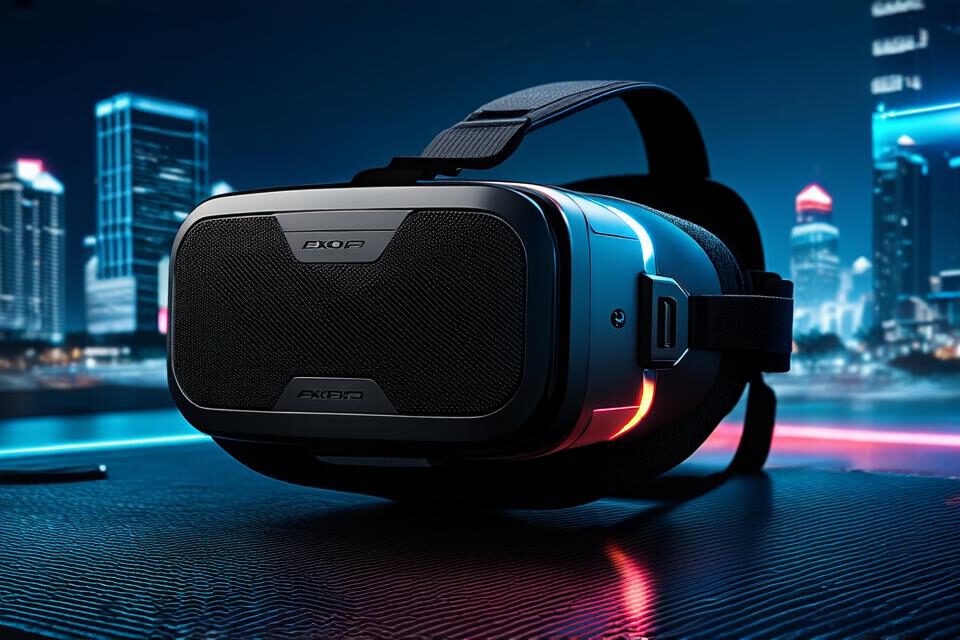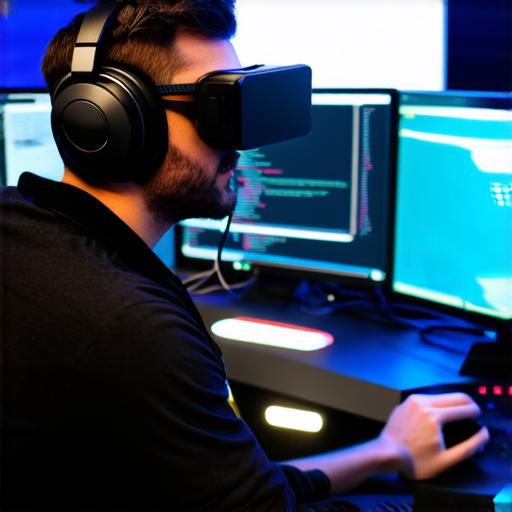Master VR Development: Expert Tips & Resources

Virtual Reality (VR) is a rapidly evolving technology that’s changing the way we experience and interact with the world around us. From gaming to education and healthcare, VR has countless potential applications. However, developing a VR application can be a complex and challenging task. If you want to master VR development, you’ll need to understand the basics of programming, 3D modeling, and user experience design.
Why VR Development is Important
Virtual reality technology has been around for decades, but it’s only in recent years that it’s become more accessible and affordable. Today, VR development is an important industry with growing demand for skilled developers. Here are some reasons why VR development is important:
- Gaming Industry: The gaming industry is one of the largest consumers of VR technology. VR games offer a more immersive experience than traditional games, and they’re becoming increasingly popular. With VR, players can feel like they’re part of the game world and interact with characters in new ways.
- Education: VR can be used to create interactive educational experiences that engage students and enhance their learning. For example, medical students can use VR to simulate surgeries and other procedures, while history students can explore ancient ruins in 3D. VR can also be used to teach subjects like science, art, and language arts in a more engaging and interactive way.
- Healthcare: VR can be used for therapy, training, and simulation in healthcare settings. It can also be used for surgical planning and rehearsal, which can improve patient outcomes and reduce the risk of complications. For example, VR can be used to simulate surgeries and other medical procedures to help doctors and nurses practice their skills before performing them on real patients.
Tools and Technologies
There are several tools and technologies you’ll need to become a successful VR developer. Here are some of the most popular ones:
- Game Engines: Unity and Unreal Engine are two of the most popular game engines for VR development. They offer powerful tools for creating 3D environments, animations, and physics simulations. Unity is a cross-platform game engine that supports both desktop and mobile devices, while Unreal Engine is primarily used for console and PC gaming.
- 3D Modeling Software: Blender is a widely used 3D modeling software for VR development. It’s free and open-source, and it offers a lot of flexibility and customization options. Other popular 3D modeling software include Maya, 3ds Max, and Cinema 4D.
- Development Kits: Most VR platforms have their own development kits, which provide tools and libraries for creating VR applications. For example, the Oculus SDK provides tools for developing applications for the Oculus Quest. The HTC Vive SDK provides tools for developing applications for the Vive, while the PlayStation VR SDK provides tools for developing applications for the PlayStation 4.
Tips for Successful VR Development
Here are some tips for successful VR development:
- Understand Your Target Audience: Knowing your target audience is crucial for creating a successful VR application. You need to understand their needs, preferences, and limitations. For example, if you’re developing a VR game, you need to understand what type of games your target audience enjoys playing. If you’re developing a VR educational experience, you need to understand what subjects your target audience is interested in learning about.
- Keep the User Experience in Mind: The user experience should be at the forefront of your development process. You need to ensure that your VR application is intuitive, easy to use, and engaging. This includes designing a comfortable and natural environment for users, ensuring that the controls are easy to understand and use, and providing clear instructions and feedback.
- Test and Iterate: Testing and iterating are essential for VR development. You need to test your VR application with real users and get feedback on what works and what doesn’t. This includes user testing, beta testing, and gathering feedback from focus groups. Based on this feedback, you can make improvements to your VR application and iterate until it meets the needs of your target audience.
- Learn from Other Developers: There’s a lot of knowledge and experience available from other VR developers. You can learn from their successes and failures, as well as their best practices for development. This includes reading articles, watching tutorials, attending conferences and meetups, and participating in online communities like Reddit and Stack Exchange.
Case Studies
Here are some case studies of successful VR applications that you can learn from:
- “Job Simulator” by Oculus VR is a popular VR game that simulates various jobs such as chef, doctor, and astronaut. It’s designed to be fun and engaging while also teaching players about different careers. The game has received positive reviews from both critics and players, and it’s been downloaded millions of times.
- “Tilt Brush” by Google VR is a 3D painting application that allows users to create artwork in a virtual environment. It’s designed to be intuitive and easy to use, with simple gestures for selecting colors, brushes, and textures. Tilt Brush has been well-received by artists and designers, and it’s been used to create some amazing pieces of art.
- “Anatomyoze” is a VR educational experience that teaches anatomy through interactive simulations. It allows users to explore the human body in a virtual environment, learning about different systems and functions along the way. Anatomyoze has received positive reviews from both teachers and students, and it’s been used in classrooms around the world.

Summary
VR development is a complex and challenging task that requires a combination of skills and knowledge. However, with the right tools and resources, you can become a successful VR developer and create some amazing applications. By understanding your target audience, keeping the user experience in mind, testing and iterating, and learning from other developers, you can create VR applications that are engaging, educational, and fun.